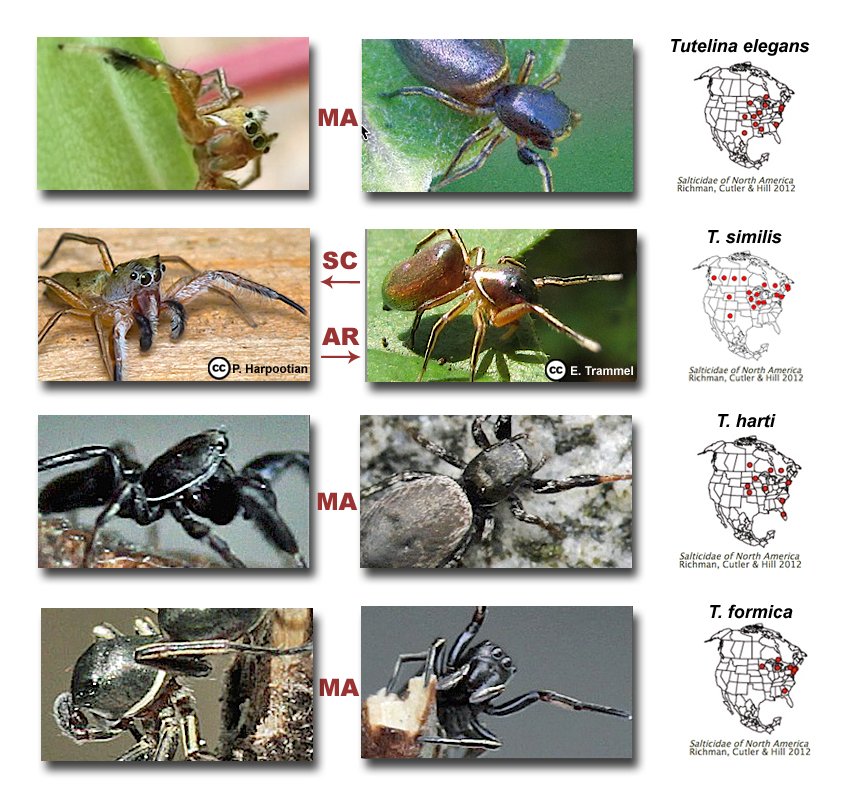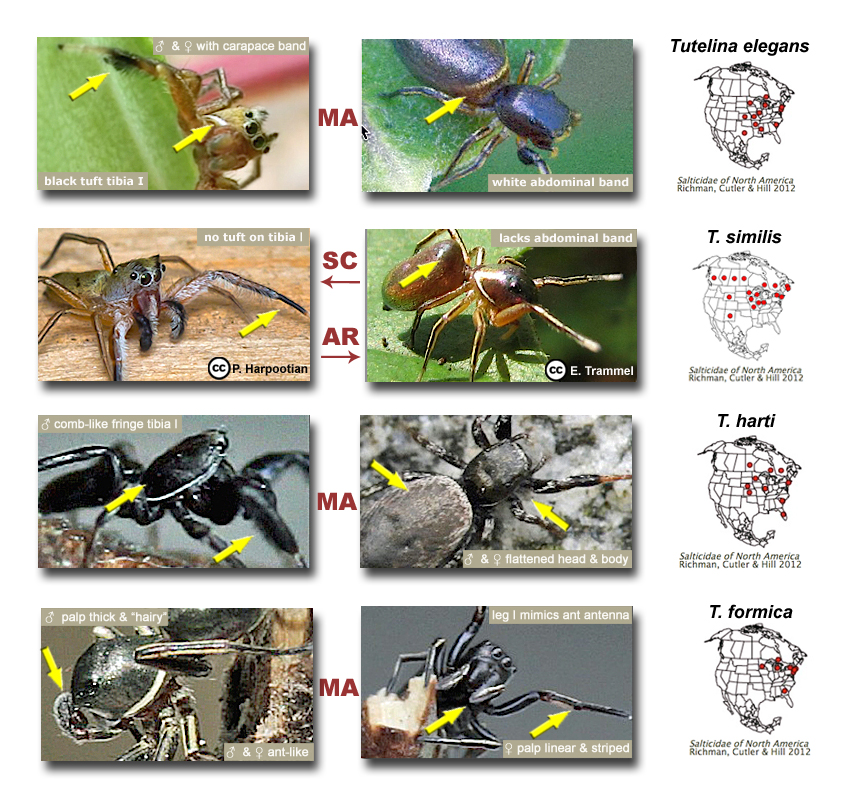Marpissoida: Dendryphantinae
Four species of Tutelina spiders occur in North America. Three are recorded for Massachusetts (T. elegans, T. formicaria, and T. harti). Although Kaston gives records for T. similis in Connecticut and there are additional records northward, to date this species has not been observed here. Shared characteristics of the group include unusually "stout" fangs and noticeably iridescent scales covering some or most of the body. Ant predation is well documented by T. similis and T. formicaria and is likely common to all four species. These jumping spiders also exhibit, to a greater or lesser extent, behaviors and morphology typical of ant mimics. T. formicaria has an ant-like body shape and legs. In addition this species almost constantly moves legs I in a way that mimics the antennal movements of ants. T. elegans and T. harti also exhibit similar, if less continuous, leg I movements.
The relative abundance of most jumping spiders is difficult to assess given the small sample size of recent records as well as the absence of any substantial historical record. Even in Massachusetts where relatively numerous salticid records spanning more than two centuries of observations do exist, the data for any given species may be minimal. Of the three Massachusetts Tutelina species T. elegans seems relatively common and is fairly easy to find. The other two species are seldom recorded and apparently uncommon or even rare. In his 1891 "New England Attidae" Emerton's detailed description of T. elegans indicates he had seen numerous individuals ranging from New Hampshire to Connecticut. In contrast he mentions "only on female" T. harti and that for T. formicaria "I have seen females only" ( two locations in Massachusetts and one in Connecticut). Whether or not these two species are actually uncommon or rare is difficult to determine. Because T. harti spends much of its life in trees it is much less likely to be seen. Kaston's discussion of T. formicaria suggests a similar scenario for that species (see under "Identification"). Finally, given Kaston's statement that although T. similis is "not as commonly encountered as elegans this spider seems to have a more general distribution over the country," it seems reasonable to expect that the fourth North American Tutelina will be found in Massachusetts at a future date.
Emerton 1891; Kaston 1981; Wing, 1983; Maddison 1995; Richman, Cutler and Hill 2012; Hill and Edwards, 2013

 Tutelina elegans
Tutelina elegans Tutelina formicaria
Tutelina formicaria Tutelina harti
Tutelina harti